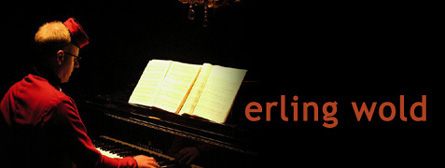
The Nazis did a lot of
really bad things, and tainting the swastika in the West forever and always was one of them, leading even to the current attempts in the EU to
ban the symbol, although it's really unclear how one actually bans a simple figure that has been in use for at least three millennia, spans cultures, is currently seen around the world, is part of ornamental borders and floors and temple columns, included in books on tessellations and origami, the logo of
charitable organizations, etc.
Lynne Rutter saw the lovely example of a decorative
manji at the Sensoji Temple in Tokyo a few days ago. However, even there, the Nazi stigma still is felt as, since the war, all the new Buddhist manji in Japan are of the left-handed variety, not the right-handed isomer favored by the historical evil. Below, from a Tokyo shrine near Shibuya:

 The Nazis did a lot of really bad things, and tainting the swastika in the West forever and always was one of them, leading even to the current attempts in the EU to ban the symbol, although it's really unclear how one actually bans a simple figure that has been in use for at least three millennia, spans cultures, is currently seen around the world, is part of ornamental borders and floors and temple columns, included in books on tessellations and origami, the logo of charitable organizations, etc. Lynne Rutter saw the lovely example of a decorative manji at the Sensoji Temple in Tokyo a few days ago. However, even there, the Nazi stigma still is felt as, since the war, all the new Buddhist manji in Japan are of the left-handed variety, not the right-handed isomer favored by the historical evil. Below, from a Tokyo shrine near Shibuya:
The Nazis did a lot of really bad things, and tainting the swastika in the West forever and always was one of them, leading even to the current attempts in the EU to ban the symbol, although it's really unclear how one actually bans a simple figure that has been in use for at least three millennia, spans cultures, is currently seen around the world, is part of ornamental borders and floors and temple columns, included in books on tessellations and origami, the logo of charitable organizations, etc. Lynne Rutter saw the lovely example of a decorative manji at the Sensoji Temple in Tokyo a few days ago. However, even there, the Nazi stigma still is felt as, since the war, all the new Buddhist manji in Japan are of the left-handed variety, not the right-handed isomer favored by the historical evil. Below, from a Tokyo shrine near Shibuya:





2 comments:
if you look carefully, the swastik symbol of many cultures (such as the photos you provided) is actually the reverse of what was used by the nazis.
i have *heard* that this was done on purpose by the nazis to represent the opposite of peace, but i would double check on that.
but it is true, that it still tainted the symbol, as it is hard to notice that minor difference.
I have heard this story as well, and I completely agree that - at least for the foreseeable future - the symbol is so tainted by the horrors of the fascists that such a subtle difference is practically irrelevant.
However, it's pretty easy to find both swastika directions in other cultures, ancient and modern. For example, the Jains and Hindus use and have used the symbol in the same direction as that used by the Nazis, and they don't make the distinction (one direction peace and the other direction the opposite). Also, it is possible to find early versions of the Nazi swastika in both directions. I've never seen anything on why they settled on the one direction over the other, so I don't know if it had a particular meaning for them. It may have simply been to enforce a consistency of design. The Nazis were nothing if not aware of the power of branding. It was at the same time that they added the dramatic 45 degree twist, which is much rarer in non-Nazi contexts.
Post a Comment